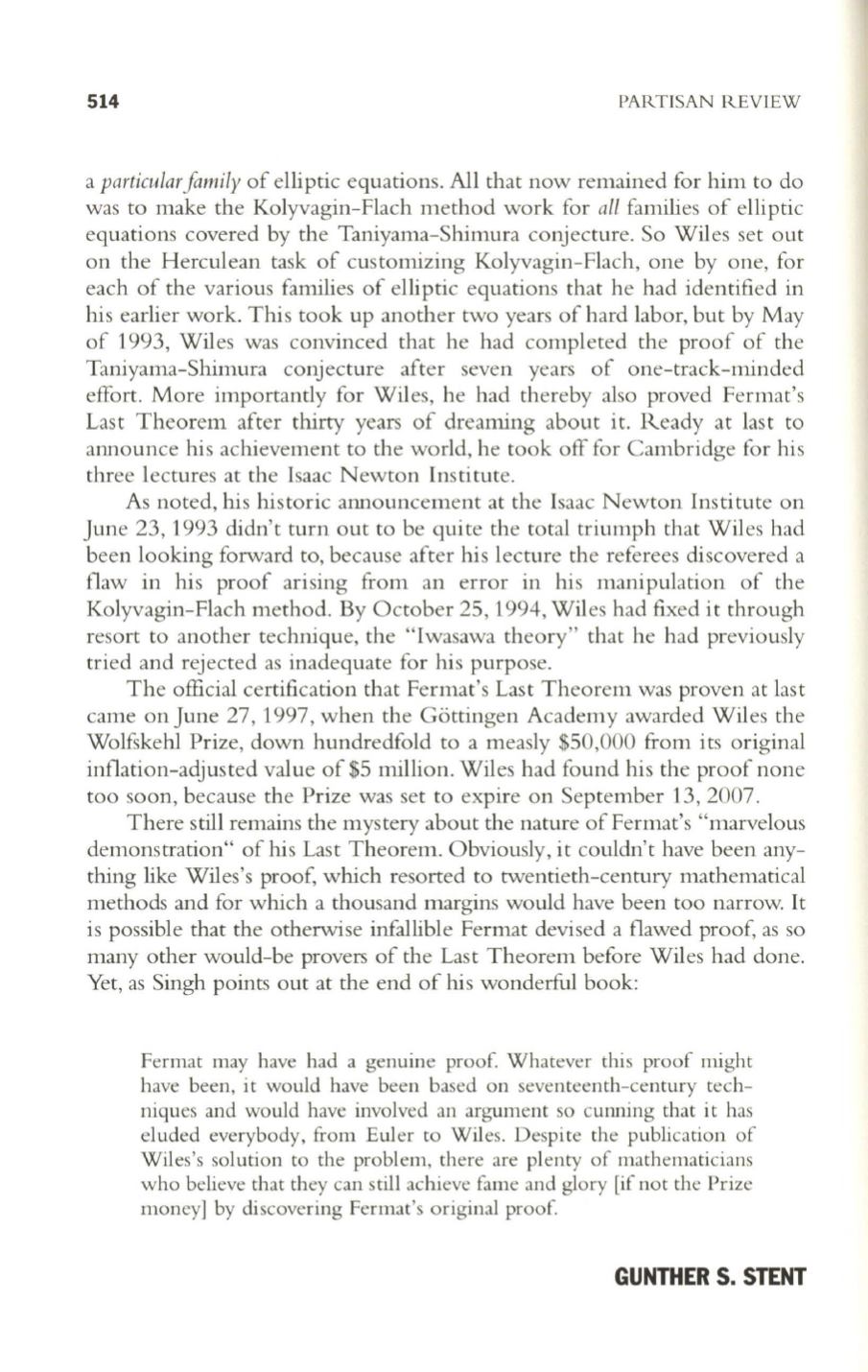
514
PARTISAN REVIEW
a
particularJamily
of elli ptic equations. All that now remained for him to do
was to make the Kolyvagin-Flach method work for
all
families of elliptic
equations covered by the Taniyama-Shimura conjecture. So Wiles set out
on the Herculean task of customizing Kolyvagin-Flach, one by one, for
each of the various families of elli ptic equations that he had identified in
his earlier work. This took up another two years of hard labor, but by May
of 1993, Wiles was convinced that he had completed the proof of the
Taniyama-Shimura conjecture after seven years of one-track-minded
effort. More importantly for Wiles, he had thereby also proved Fermat's
Last Theorem after thirty years of dreaming about it. Ready at last to
announce his achievement to the world, he took off for Cambridge for his
three lectures at the Isaac Newton Institute.
As noted, his historic announcement at the Isaac Newton Institute on
June 23, 1993 didn't turn out to be qui te the total triumph that Wiles had
been looking forward to, because after his lecture the referees discovered a
flaw in his proof arising from an error in his manipulation of the
Kolyvagin-Flach method. By October 25, 1994, Wiles had fixed it through
resort to another technique, the "Iwasawa theory" that he had previously
tried and rejected as inadequate for his purpose.
The official certification that Fermat's Last Theorem was proven at last
came on June 27, 1997, when the Gottingen Academy awarded Wiles the
Wolfskehi Prize, down hundredfold to a measly $50,000 from its original
inflation-adjusted value of $5 million. Wiles had found his the proof none
too soon, because the Prize was set to expire on September 13,2007.
There still remains the mystery about the nature of Fermat's "marvelous
demonstration" of his Last Theorem. Obviously, it couldn't have been any–
thing like Wiles's proof, which resorted to twentieth-century mathematical
methods and for which a thousand margins would have been too narrow. It
is possible that the otherwise infallible Fermat devised a flawed proof, as so
many other would-be provers of the Last Theorem before Wiles had done.
Yet, as Singh points out at the end of his wonderful book:
Fermat may have had a genuine proof. Whatever this proof might
have been, it would have been based on seventeenth-century tech–
niques and would have involved an argument so cum-ling that it has
eluded everybody, from Euler to Wiles. Despite the publication of
Wiles's solution to the problem, there are plenty of mathematicians
who believe that they can still achieve fame and glory [if not the Prize
money] by discovering Fermat's original proof.
GUNTHER S. STENT


